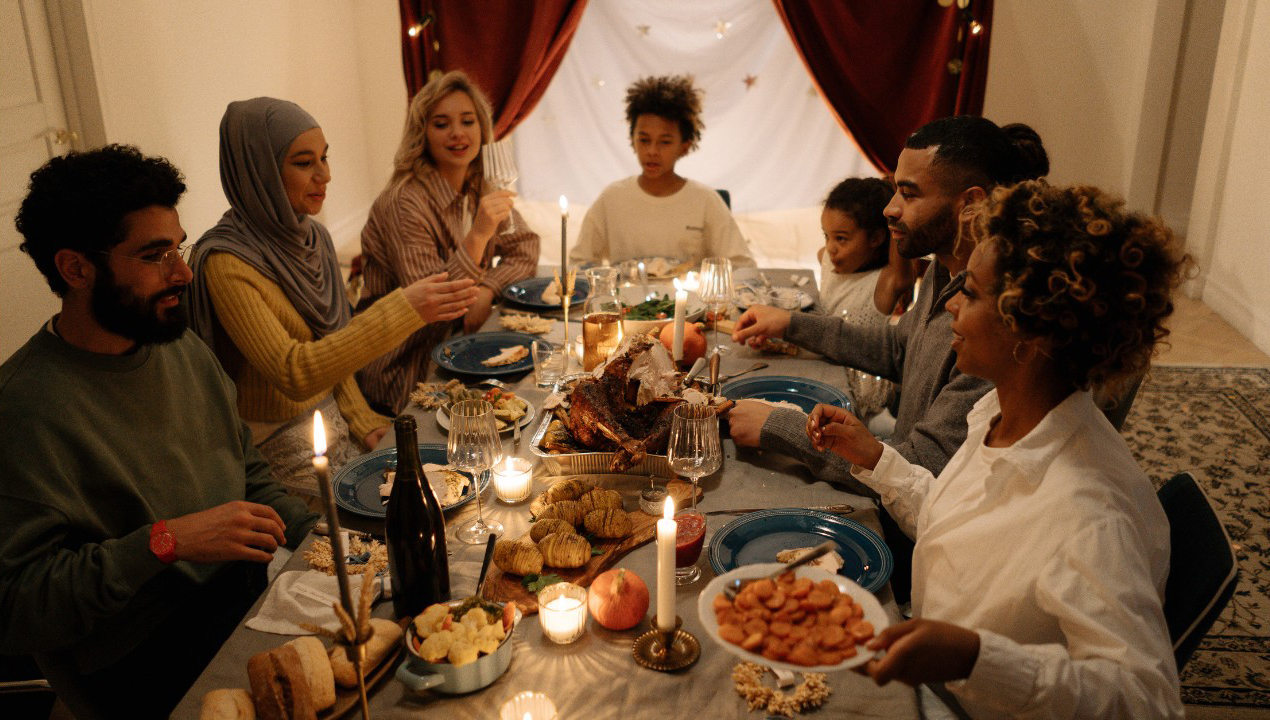
Each November, families across the U.S. gather around tables filled with familiar foods and familiar stories. We might not agree on which side dish is best—or whether football or the parade should play first—but Thanksgiving remains one of the few holidays almost every American celebrates. In a time when division often dominates the headlines, that shared ritual matters.
Thanksgiving isn’t just about food and gratitude. It’s about remembering what we hold in common. In many ways, it’s the perfect metaphor for the American experiment itself—a diverse mix of people, backgrounds, and beliefs, united by a shared set of civic ideals.
Finding Common Ground in a Fractured Time
Finding common ground has become harder. Conversations—online and even at the dinner table—can quickly turn tense. When we lose the ability to talk across differences, we risk losing something essential to a free society: the capacity to debate ideas respectfully and seek solutions together.
Subscribe Now to Stay in the Loop
Stay updated on new videos, fresh resources, and student contest announcements.
Thanksgiving offers a moment to pause that pattern. Even when families disagree, the act of gathering reminds us that relationships matter more than winning arguments. The same is true for civic life. We can disagree passionately and still remain part of the same national family.
A Common Civic Culture of Freedom
More than two centuries ago, the Founders built a society on ideas rather than ancestry. The belief that people could govern themselves, speak their minds, worship freely, and pursue happiness in their own way became the foundation of a new kind of nation. Those ideals weren’t perfect in practice, but they created a common civic culture that gave future generations something to build on and improve.
As America approaches its 250th birthday in 2026, Thanksgiving offers a meaningful moment to help students reflect on the ideas that make this country work. Gratitude for freedom, justice, and opportunity can unite students from all walks of life—just as those principles once united thirteen very different colonies.
The “Dinner Table Voices of Liberty” Challenge
Teachers can use this season to connect personal gratitude with civic appreciation. A simple discussion question can open the door:
What part of America’s founding ideas are you most grateful for?
Encourage students to take that question home for the holiday. Ask them to talk with family or friends and pose the same question:
“What part of America’s founding are you most grateful for and why?”
When they return, invite them to share what they heard. What ideas came up again and again? Were there any differences between generations? These reflections often spark thoughtful discussions about the values that still bind us together.
Discussing Without Discord
Of course, students (and adults) alike may feel nervous about bringing up “big topics” around family gatherings. That makes this a good time to practice and model the art of civil disagreement—something every democracy needs.
Here are a few simple “rules for respectful discussion,” useful both in class and at home:
-
- Listen to understand, not to win. Let others finish their thoughts before responding.
- Ask questions before offering opinions. Curiosity opens doors that criticism closes.
- Speak about ideas, not identities. Disagree with arguments, not people.
- Look for shared values. Freedom, fairness, and opportunity are starting points, not end points.
- End with gratitude. Even if you disagree, thank others for sharing their views.
Remind students that disagreement isn’t dangerous—it’s a sign of engagement. The key is to keep it respectful, not personal.
From the Dinner Table to the Classroom
For teachers who want to take these conversations further, our Undivide Us video (must be logged in to your free SITC.org account to view) and companion lesson, In the Other Person’s Shoes, offer a structured way to help students practice empathy and understanding. The activity challenges participants to imagine why a reasonable person might hold an opposing view—and to explain that view as if it were their own.
This approach helps students do more than argue their side—it helps them humanize those on the other. The exercise often leads to the same realization Thanksgiving does: when we slow down and listen, we discover that we have far more in common than we thought.
“Too often we become entrenched in our own echo chambers. We see each other as enemies rather than fellow citizens.” —Ben Klutsey, Undivide Us
Hearing the Original Voices
To deepen these reflections, pair classroom discussion with short readings from Voices of Liberty, our anthology of original texts from the Founders and other important American voices. Have students read a few lines from Franklin, Madison, or Abigail Adams and identify what each writer believed would hold the nation together. Then compare those hopes to the answers their families shared.
This simple exercise reinforces a powerful truth: the American experiment endures because each generation chooses to value and protect its guiding principles.
Bringing It Back to Gratitude
As you and your students head into the holiday season, consider taking a few minutes to celebrate the ideas that make Thanksgiving—and our shared civic life—possible. Freedom of thought. Respect for debate. Gratitude for rights we sometimes take for granted.
A common table. A common culture. The things that unite us, not divide us. And, we hope, a renewed appreciation for the voices that started it all.
Classroom connections:
- Watch: Undivide Us – and try the “In the Other Person’s Shoes” discussion technique with your students.
- Read: Voices of Liberty: Primary Sources and Classroom Activities for America’s 250th to explore the ideals that unite us.
- Do: The “Dinner Table Voices of Liberty” challenge—perfect for Thanksgiving week.
We here at Stossel in the Classroom are thankful for you and all you do, each and every day, to help students learn.

